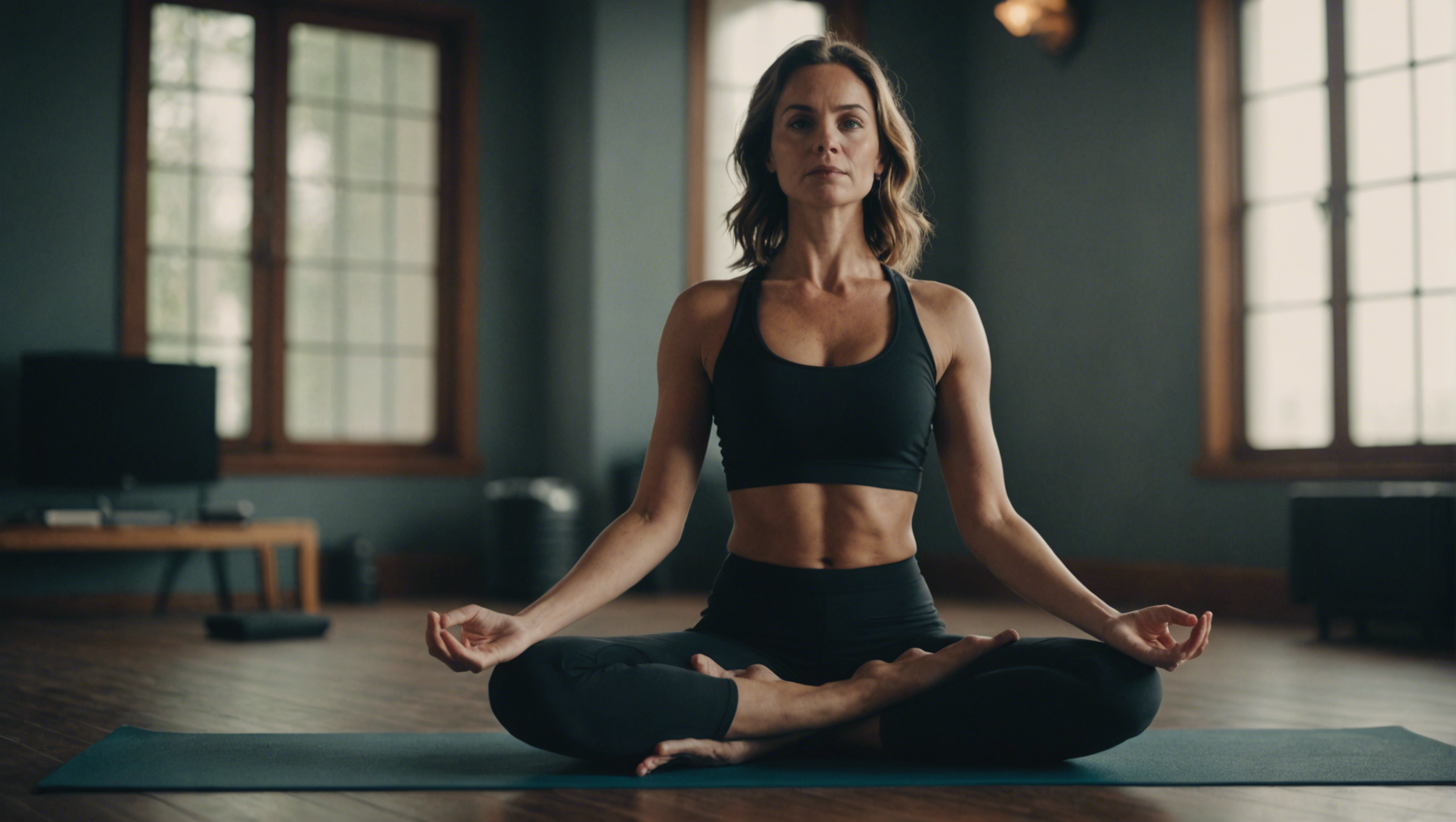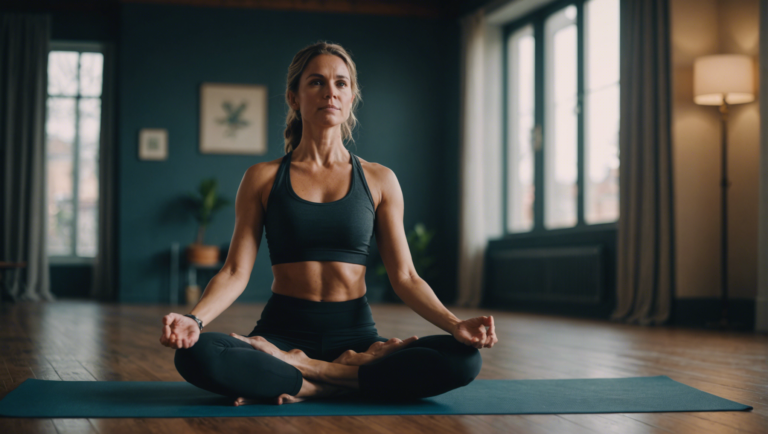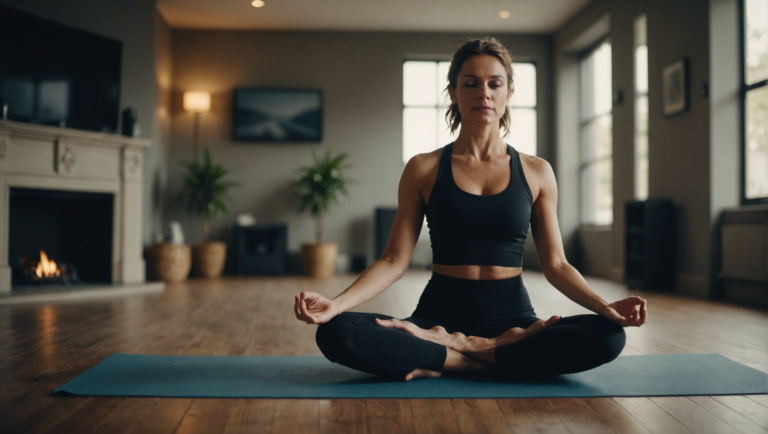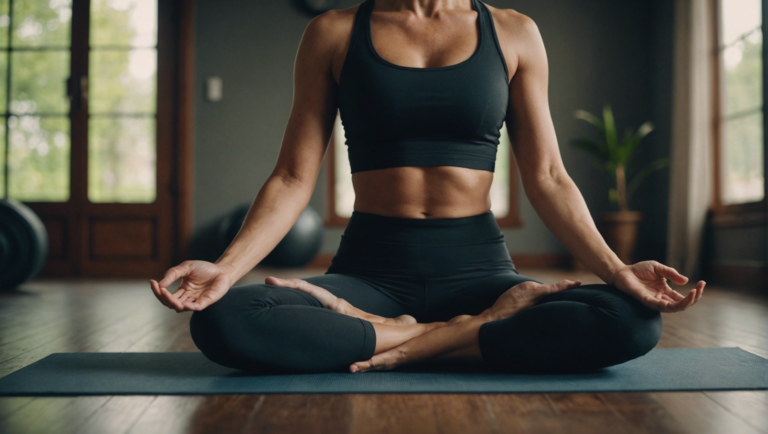Optimal Weekly Yoga Routine: How Much Should I Do?
Crafting Your Optimal Weekly Yoga Routine: Balancing Intensity and Rest
Crafting a well-balanced yoga routine that meshes with our modern-day demands requires a nuanced understanding of both the physical and mental benefits of yoga. The key to achieving a comprehensive and satisfying yoga practice lies in harmonizing the intensity of workouts with adequate periods of rest and recovery. This equilibrium not only enhances the body’s resilience but also elevates the mind’s tranquility and focus.
Finding Your Yoga Balance: Understanding Your Body’s Needs
To embark on this journey, an understanding of your body’s cues is paramount. The quest for an optimal weekly yoga practice starts with listening to your body and being mindful of its signals. Not every day warrants an intense session; equally, not every day should be devoid of movement. The magic lies in tuning into your body’s needs and adjusting your practice accordingly. Tailoring your routine to include a variety of poses, intensities, and yoga styles can lead to more personalized and beneficial outcomes.
Navigating Yoga Styles and Frequencies for Optimal Benefits
Delving into the myriad of yoga styles can be both exciting and overwhelming. From the calm and steadiness of Hatha to the vigorous sequences of Vinyasa, each style offers unique benefits and challenges. For beginners, aiming for three to four sessions a week allows the body to acclimate to new movements while providing time for recovery. More experienced practitioners might find a daily practice more suitable, varying the intensity and style to maintain balance.
The Role of Rest and Recovery in Your Yoga Practice
Equally critical to your routine is the incorporation of rest days or restorative yoga sessions. Yoga, at its core, is about balance and harmony, principles that extend beyond the mat into the cycles of exertion and recovery that govern our physical well-being. slower, more meditative yoga styles such as Yin or Restorative yoga can offer profound benefits, allowing the body to repair and the mind to reflect and rejuvenate.
Structuring Your Week for Maximum Yoga Benefits
In structuring your weekly routine, consider dedicating days to different focuses. For instance, you might start the week with a vigorous Vinyasa class to invigorate the body after the weekend. Mid-week could be balanced with a gentle Hatha session focused on alignment and mindfulness, while the weekend could incorporate a restorative session to reset for the week ahead. It’s about creating harmony between activity and rest, action and reflection.
Listening and Adjusting: The Path to an Optimized Yoga Routine
Refinement is key to maintaining an optimal yoga practice. As you progress, continually reassess your routine, listening intently to your body’s responses. This mindfulness can guide you to make the necessary adjustments, whether that means incorporating more restorative practices, challenging yourself with advanced poses, or even addressing the mental and emotional aspects of yoga. Remember, the optimal yoga routine is not a static entity but a fluid, evolving practice that adapts to your growth and changing needs.
The Synergy of Yoga and Lifestyle: Beyond the Mat
Integrating yoga into your weekly routine is about more than just physical asanas; it’s about cultivating a lifestyle. This involves recognizing the influence of diet, sleep, and stress management on your practice. A holistic approach, where yoga becomes a part of a larger endeavor towards health and well-being, elevates the benefits of your practice both on and off the mat.
The journey towards finding your optimal weekly yoga routine is as much about the physical practice as it is about mindfulness and personal growth. By balancing intensity with rest, diversifying your practice, and staying attuned to your body’s needs, you cultivate a practice that nourishes your body, calms your mind, and enriches your spirit.
The Role of Different Yoga Styles in Achieving Wellness Goals
Yoga is not a one-size-fits-all practice. The myriad of styles available, ranging from the gentle flow of Hatha to the intense heat of Bikram, means that everyone from the novice to the seasoned practitioner can find a style that suits their fitness level, wellness goals, and even mood. Understanding how different yoga styles contribute to achieving wellness goals is not only enlightening but also crucial to developing a personalized yoga journey that is both fulfilling and sustainable.
Unveiling the Power of Hatha Yoga
Hatha yoga serves as a solid foundation for all yoga styles. It is often recommended for beginners due to its slower pace, which allows for a deeper understanding of each posture and breath. Hatha yoga is particularly beneficial for stress reduction and improving mental health, offering a gentle way to begin exploring the physical and mental discipline that yoga requires. For those looking to establish a base level of flexibility, balance, and strength, while also enhancing their mindfulness and relaxation techniques, Hatha is an excellent choice.
The Dynamic World of Vinyasa Yoga
Vinyasa stands out for its dynamic, flow-like sequence of postures, with movements synchronized to the breath. This style is ideal for those seeking a more vigorous workout that includes cardiovascular benefits as part of their wellness plan. Vinyasa yoga is not only about physical endurance and strength but also promotes mental stamina, as practitioners focus on the continuous flow from one pose to another. Its variability and pace make it an engaging practice for people looking to add variety to their fitness regimen while fostering a deeper mind-body connection.
Exploring the Intensity of Ashtanga Yoga
Ashtanga is known for its challenging series of postures performed in a specific order, without deviation, and at a brisk pace. This style is designed for those seeking to push their physical limits and enhance their mental focus. Ashtanga yoga emphasizes stamina, flexibility, and strength, making it a suitable choice for individuals with a high level of fitness or those aiming to significantly advance their yoga practice. As practitioners repeat the series over time, they often report improvements in physical health, mental clarity, and emotional stability.
The Therapeutic Approach of Iyengar Yoga
Iyengar yoga differentiates itself with its meticulous attention to alignment and the use of props like belts, blocks, and blankets. This style is excellent for individuals with injuries, chronic conditions, or anyone needing a more therapeutic approach to their yoga practice. Iyengar teaches patience and precision and is highly beneficial for improving posture, balance, and flexibility. In addition, this methodical approach allows for deeper introspection and mental focus, aiding in the relief of stress and anxiety.
Experiencing the Heat of Bikram Yoga
Bikram yoga, practiced in a room heated to approximately 105 degrees Fahrenheit, consists of a series of 26 poses and two breathing exercises. This style is famed for its ability to detoxify the body and increase flexibility. The intense heat promotes sweating, which is believed to flush toxins from the body. Bikram can be a powerful tool for weight loss as part of a wellness regimen, with the added benefits of improved circulation and a boost in mental toughness from enduring the challenging environmental conditions.
Yoga’s Holistic Contribution to Wellness
Each yoga style offers unique benefits that can be tailored to meet individual wellness goals, whether they’re focused on physical health, mental well-being, or a combination of both. Engaging with different yoga practices can provide a holistic approach to fitness and self-care, aiding in the development of a balanced and healthy lifestyle. By exploring various styles, individuals can discover the specific practices that resonate with their needs and preferences, fostering a deeper connection to their yoga journey and overall wellness objectives.
Tailoring your yoga practice to align with your specific wellness goals not only maximizes the benefits but also ensures a more enjoyable and sustainable practice. As you delve into the world of yoga, listen to your body and allow your personal wellness journey to guide your choices.
Understanding Your Body’s Signals: Adjusting Your Yoga Practice for Maximum Benefit
Yoga, an ancient practice combining physical postures, breath control, and meditation, has been embraced globally for its ability to foster physical health, mental clarity, and emotional tranquility. However, to harness the full spectrum of yoga’s benefits, a nuanced understanding of your body’s unique signals is paramount. Tailoring your yoga routine to align with these cues can dramatically enhance its effectiveness, fostering a deeper connection between mind, body, and spirit.
Recognizing Your Body’s Language
Listening attentively to your body’s nuanced communications is the first step towards optimizing your yoga practice. Symptoms such as persistent fatigue, discomfort during certain poses, or a general sense of unease can signify a need for adjustment. Conversely, feeling energized, balanced, and at peace post-practice are indicators that your regimen aligns well with your body’s needs.
Key Strategies for Reading Physical Signals
Developing an intuitive understanding of your body’s messages requires patience and practice. Begin by incorporating a brief period of stillness and mindfulness before each yoga session. During this time, mentally scan your body for any areas of tightness, discomfort, or fatigue. This mindful approach can help highlight specific needs your practice should address, such as focusing on flexibility or strength in certain areas.
Adjusting Practices for Personalized Benefits
Once you’ve attuned to your body’s signals, the next step involves adapting your yoga routine for personalized benefits. This could mean altering the frequency, duration, types of poses, or even the style of yoga you practice.
Frequency and Duration: Not every body thrives on a daily intensive practice. Some may find greater benefits in shorter, more frequent sessions, while others may prefer lengthier practices spaced further apart. Experiment to discover the rhythm that leaves you feeling rejuvenated rather than depleted.
Variety of Poses: Pay attention to how different poses affect your body and mind. If you notice particular discomfort or excessive ease in certain positions, it may be time to modify your routine. Integrate poses that challenge your weaknesses and balance those that play to your strengths, ensuring a comprehensive developmental approach.
Yoga Styles: The diversity among yoga styles means there’s likely one that suits your current physical and emotional needs perfectly. From the gentle flows of Hatha to the vigorous sequences of Ashtanga, don’t hesitate to explore various styles. Listening to your body’s response after trying different yoga practices can guide you to the one most beneficial for you at any given time.
Mindful Adaptation for Changing Needs
Your body’s needs and your life’s demands are perpetually evolving, suggesting that your yoga practice should adapt accordingly. Transition periods, whether they’re related to age, lifestyle changes, or emotional challenges, require a revisited approach to your yoga routine. It’s crucial to maintain an ongoing dialogue with your body, acknowledging its changing needs and adjusting your practice to support these shifts.
The Role of Professional Guidance
While self-awareness is a powerful tool in customizing your yoga practice, the insights of experienced instructors can be invaluable. A skilled yoga teacher can offer personalized recommendations based on their observations and understanding of yoga’s principles. They can provide adjustments to poses, suggest alternative asanas, or advise on the most beneficial yoga styles for your specific circumstances.
Fostering a Sustainable Yoga Journey
Embracing a dynamic approach to your yoga practice, one that evolves in concert with your body’s signals, sets the stage for a sustainable and fulfilling yoga journey. It encourages a deeper connection with your inner self, promotes physical well-being, and nurtures mental resilience. This personalized pathway not only maximizes the benefits of your practice but also embodies the true essence of yoga: a harmonious and mindful union of body, mind, and spirit.
Tailoring your yoga routine in response to your body’s continuous feedback ensures that each session contributes to your overall well-being. As you refine your practice, listen, adapt, and explore with curiosity. Remember, the most beneficial yoga routine is one that respects and reflects your body’s individual needs and journey.
Integrating Yoga into Your Lifestyle: Practical Tips for Busy Individuals
Managing a hectic lifestyle while trying to maintain or initiate a wellness routine can often feel like an uphill battle. With the fast pace of modern life, dedicating time to practices such as yoga can sometimes seem nearly impossible. However, yoga, with its multifaceted benefits for both mind and body, can be a crucial element in achieving a balanced life. This guide offers practical tips on seamlessly weaving yoga into the fabric of a busy schedule, ensuring that even the most time-pressed individuals can reap its rewards.
Making Time Without Making Sacrifices
One of the first hurdles to overcome is the misconception that yoga requires large blocks of uninterrupted time. The truth is, even a few minutes dedicated to yoga can have significant benefits. Start by identifying small pockets of time throughout your day. It could be a few minutes in the morning before the day begins, during lunch break, or in the evening as a method to unwind. These moments can be ideal for practicing short yoga sequences or even a few rounds of deep, mindful breathing. This approach allows for flexibility, making it easier to maintain consistency.
Tailor Your Practice to Your Daily Rhythm
Understanding your daily rhythm is key to a sustainable yoga practice. If mornings are when you feel most energized, consider starting your day with a dynamic yoga sequence to invigorate your body and mind. For those who find their energy peak in the evening, a gentle, restorative yoga session can help in releasing the stress of the day and preparing for a restful sleep. Listening to your body’s natural rhythms not only enhances the benefits of yoga but also ensures that the practice feels like a nurturing, rather than a demanding, addition to your day.
Utilize Technology to Your Advantage
In an era where technology permeates nearly every aspect of life, it can also serve as a valuable tool in integrating yoga into a busy schedule. Numerous apps and online platforms offer yoga sessions ranging from 5 minutes to over an hour, accommodating any time constraint. Additionally, these digital solutions provide the flexibility to practice anywhere, be it at home, in the office, or even while traveling. This accessibility can significantly reduce the barriers to maintaining a regular yoga practice amidst a hectic lifestyle.
Integrate Yoga Beyond the Mat
Yoga is not solely about physical postures; it’s a holistic practice that encompasses mindfulness, breathing techniques, and a philosophy geared towards harmonious living. these aspects of yoga into daily life can amplify its benefits. Practice mindfulness during routine activities, such as walking or eating, by being fully present in the moment. Breathing techniques can be employed to manage stress or boost energy levels throughout the day. By integrating the principles of yoga beyond the physical practice, it becomes a seamlessly woven thread in the tapestry of daily life, enhancing overall well-being.
Set Realistic Goals and Celebrate Progress
When trying to fit yoga into a busy schedule, it’s crucial to set realistic and achievable goals. Rather than aiming for lengthy daily practices, start with shorter, more manageable sessions. Celebrate consistency and progress, no matter how small, to maintain motivation. Remember, the goal is to create a sustainable practice that supports your lifestyle and well-being, not to add another item to your list of daily tasks.
Yoga into a busy lifestyle requires flexibility, creativity, and a commitment to self-care. By adopting a practical approach and utilizing these tips, individuals can enjoy the profound benefits of yoga without feeling overwhelmed by time constraints. Yoga then becomes not just a practice but a harmonious part of life, enriching the everyday with moments of peace, balance, and rejuvenation.
Beyond the Mat: Complementary Practices to Enhance Your Yoga Journey
Embarking on a yoga journey extends far beyond mastering poses on the mat. It’s a holistic approach to well-being that involves the mind, body, and spirit. Integrating complementary practices can significantly enhance your yoga experience, fostering deeper self-awareness, balance, and harmony. This article dives into various supplementary practices that, when aligned with your yoga routine, promise a more enriching and profound yoga journey.
Meditation: The Heart of Mindfulness
Meditation and Yoga: Siblings in Spiritual Practice
Meditation is often seen as the sister practice to yoga, both rooted in ancient traditions aimed at reaching higher consciousness and inner peace. By dedicating time to meditate, you cultivate mindfulness and a heightened sense of awareness—qualities that magnify the benefits of your yoga sessions. Engaging in meditation before or after yoga can help in quieting the mind, allowing for a deeper state of focus and connection during your practice.
Nutrition: Nourishing Your Body and Soul
Fueling the Physical Vehicle for Spiritual Journeys
What you fuel your body with is just as important as the physical activities you engage in. Adopting a sattvic diet, which emphasizes whole, plant-based foods that are high in prana (life force), can profoundly affect your energy levels, mood, and overall health. This diet complements the purifying and rejuvenating aspects of yoga, facilitating a lighter and more agile body, ready to explore the depths of poses and meditation with ease.
Ayurveda: The Science of Life
Harmonizing Your Inner Nature with the Outer World
Ayurveda, the ancient Indian "science of life," offers a personalized approach to health and wellness, identifying three primary life forces or doshas: Vata, Pitta, and Kapha. Understanding your predominant dosha and its influence on your body and mind can guide you in adapting your yoga practice and lifestyle to achieve greater balance and well-being. Ayurvedic principles, from dietary adjustments to herbal remedies and daily routines, can profoundly enhance your yoga practice and overall quality of life.
Breathwork: Mastering Prana
Pranayama: The Art and Science of Breath Control
Breathwork, or Pranayama, is a cornerstone of yoga that merits its own focus. By learning to control and extend your breath, you can influence your mental, emotional, and physiological states, promoting relaxation, reducing stress, and energizing your body. Integrating specific breathing techniques into your daily routine strengthens your respiratory system, increases your lung capacity, and prepares your body and mind for deeper yoga and meditation practices.
Journaling: Reflecting for Growth
Writing as a Tool for Self-Discovery and Transformation
Journaling is a powerful complement to the physical practice of yoga, offering a space for self-reflection, gratitude, and introspection. Recording your thoughts, experiences, and insights before or after your yoga practice can deepen your understanding of yourself and your journey, highlighting patterns, progress, and areas for growth. It acts as a mirror, reflecting your inner world and serving as a practical method for tracking your evolution over time.
By weaving these complementary practices into your daily or weekly routine, you transform your yoga journey into a comprehensive path of self-discovery and holistic well-being. Each practice is a thread in the fabric of your spiritual journey, enriching your experience on the mat and in the world. Whether you are at the beginning of your path or well along it, these practices offer valuable tools and insights for a fulfilling and enlightened life, unified in body, mind, and spirit.
Conclusion
Crafting an optimal weekly yoga routine is an individual journey, one that intertwines the physical with the mindful to foster wellness and balance. This exploration starts with understanding the delicate balance between intensity and rest, recognizing that each session contributes to our overall well-being. Whether you’re a seasoned yogi or new to the practice, acknowledging this balance is crucial in developing a routine that not only challenges you but also allows your body the necessary time to renew and recover.
Yoga offers a diverse palette of styles, each with its own unique benefits and challenges. From the gentle flows of Hatha yoga, designed to align and calm your body, mind, and spirit, to the vigorous sequences found in Ashtanga, which focuses on building strength and endurance, the variety ensures that there is a style to meet everyone’s wellness goals. Understanding the role these different practices play in achieving your objectives is a foundational step in curating a routine that aligns with your personal journey towards health and harmony.
Listening to your body’s signals and adjusting your yoga practice accordingly is another key element in optimizing your routine. Our bodies communicate with us in nuanced ways, often signaling when to push forward or when to take a step back and rest. Honing in on this dialogue between body and practice allows for a yoga experience that not only elevates your physical capabilities but also nurtures your mental and emotional well-being. It’s this thoughtful adjustment and tuning into your body’s needs that pave the way for maximum benefit from your practice.
For many, the challenge lies in integrating yoga into a hectic lifestyle. Yet, even for the busiest individuals, there are practical strategies to weave yoga into the fabric of daily life. Whether it’s starting the day with a short morning sequence, using yoga as a tool for stress relief in the middle of a busy workday, or winding down with a restorative practice before bed, these small, intentional incorporations can significantly impact your overall health and well-being. It’s about finding those moments within your existing schedule to prioritize your practice, making yoga an accessible tool for everyone.
Beyond the physical practice on the mat, there are complementary practices that can enhance your yoga journey. Meditation, mindfulness, and breath work are integral aspects of yoga that deepen your practice and bring additional benefits. These elements foster a holistic approach to wellness, cultivating not only physical strength and flexibility but also mental clarity and emotional resilience. By incorporating these practices into your routine, you embrace a more comprehensive view of yoga as a lifestyle, one that enriches your daily experience and guides you towards a more balanced and fulfilled life.
As we journey through the discovery and integration of an optimal weekly yoga routine, we are reminded of the profound impact this ancient practice can have on our lives. It’s a path that offers endless opportunities for growth, transformation, and healing, allowing us to navigate the challenges of life with grace and poise. By balancing intensity with rest, exploring various yoga styles, listening to our bodies, integrating yoga into our busy schedules, and embracing complementary practices, we unlock the full potential of our yoga practice. This holistic approach not only enhances our physical wellness but also supports our mental and emotional health, guiding us toward a more balanced, healthy, and harmonious existence. Whether you are at the beginning of your yoga journey or looking to deepen an existing practice, remember that the essence of yoga lies in the personal exploration and the continuous unfolding of the self. Through dedication, patience, and mindfulness, we can all craft a yoga routine that resonates with our unique path towards wellness, enriching our lives both on and off the mat.



